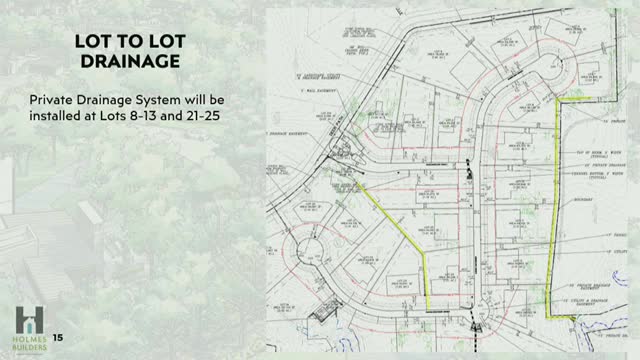Developer vows to protect ancient trees during construction
September 23, 2024 | Flower Mound, Denton County, Texas
This article was created by AI summarizing key points discussed. AI makes mistakes, so for full details and context, please refer to the video of the full meeting. Please report any errors so we can fix them. Report an error »

During a recent government meeting, discussions centered on the preservation of trees amid proposed development projects. A key speaker expressed gratitude for the preservation of a specimen tree, emphasizing the importance of maintaining both large and smaller trees, which can be over 150 years old. The speaker highlighted the intrinsic value of these trees to homeowners and the community, asserting that even trees designated for removal would be carefully evaluated for their worthiness to save.
The speaker outlined a systematic approach to tree management, utilizing a color-coded system to prioritize which trees to keep based on their health and structural integrity. This method aims to ensure that decisions regarding tree removal are made judiciously, balancing development needs with environmental considerations. The speaker noted that while some trees may not be dominant or healthy, they still play a role in the ecosystem and should be assessed thoughtfully.
Furthermore, the speaker shared experiences from past projects where large trees were successfully integrated into developments through careful planning and investment in their care. This included techniques such as tree injections and root pruning to enhance their survival chances during construction. The speaker underscored the financial benefits of preserving these trees, as homes situated near healthy trees tend to command higher market values.
To protect the trees during construction, the speaker proposed using durable metal fencing instead of traditional orange construction barriers, which are prone to damage. This decision reflects a commitment to safeguarding the trees throughout the development process.
Overall, the meeting underscored a proactive approach to tree preservation in the face of development, highlighting the importance of environmental stewardship alongside urban growth.
The speaker outlined a systematic approach to tree management, utilizing a color-coded system to prioritize which trees to keep based on their health and structural integrity. This method aims to ensure that decisions regarding tree removal are made judiciously, balancing development needs with environmental considerations. The speaker noted that while some trees may not be dominant or healthy, they still play a role in the ecosystem and should be assessed thoughtfully.
Furthermore, the speaker shared experiences from past projects where large trees were successfully integrated into developments through careful planning and investment in their care. This included techniques such as tree injections and root pruning to enhance their survival chances during construction. The speaker underscored the financial benefits of preserving these trees, as homes situated near healthy trees tend to command higher market values.
To protect the trees during construction, the speaker proposed using durable metal fencing instead of traditional orange construction barriers, which are prone to damage. This decision reflects a commitment to safeguarding the trees throughout the development process.
Overall, the meeting underscored a proactive approach to tree preservation in the face of development, highlighting the importance of environmental stewardship alongside urban growth.
View full meeting
This article is based on a recent meeting—watch the full video and explore the complete transcript for deeper insights into the discussion.
View full meeting
